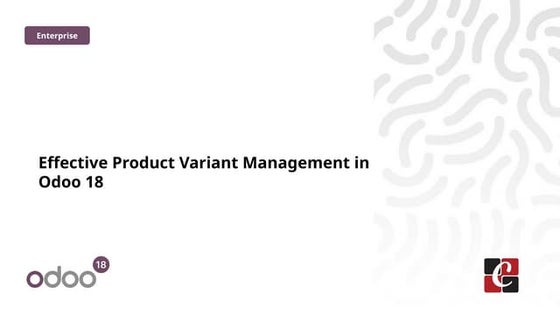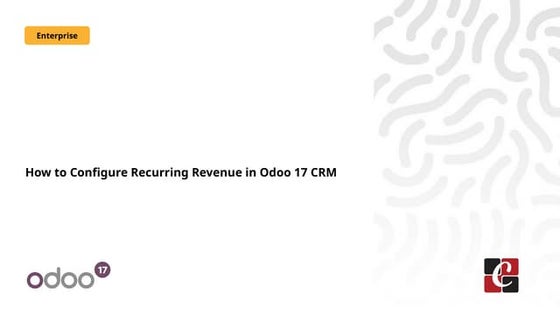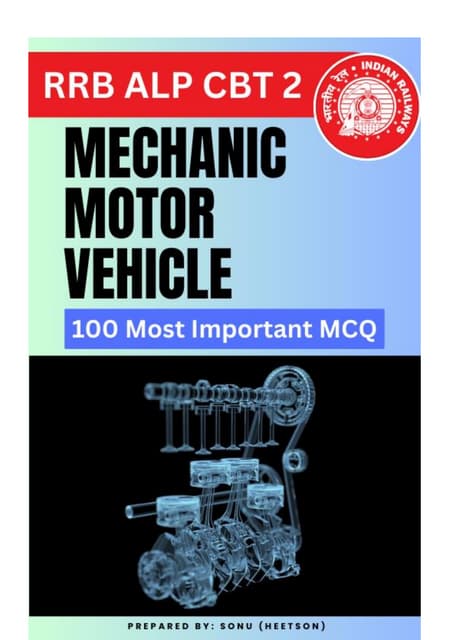Research Design and Technical Writing for AECO Application
3 likes576 views
This document outlines a research design process for architecture, engineering, construction, and operations management applications. It recommends using a mixed methods design to holistically explore research problems from multiple perspectives. The process involves first drafting a problem statement and collecting quantitative data. Qualitative data is then collected to develop the problem space and hypothesis. The data sets are aligned within the problem space to create a final hypothesis. Technical writing standards are provided for presenting the research in an objective, third-person style with appropriate sections.
1 of 11











Recommended
ABench: Big Data Architecture Stack Benchmark



ABench: Big Data Architecture Stack Benchmarkt_ivanov
╠²
ABench is a benchmark framework for evaluating big data architectures. It aims to address the growing complexity of big data stacks by providing benchmarks for individual technologies and their combinations. The framework includes data generators, supports various existing benchmarks, and can benchmark systems across four types: generic, competitive, functional, and internal. Example use cases demonstrate applying streaming and machine learning benchmarks to evaluate architectures.Technical & Research Writing (English)



Technical & Research Writing (English)Jamil AlKhatib
╠²
This document provides an overview of scientific paper writing and the publication process. It discusses the common IMRAD format for scientific papers, which includes an introduction, methods, results, and discussion section. It also outlines the steps for writing a paper, including developing an outline, drafting the manuscript, selecting a target journal, and addressing reviewer feedback. The goal of scientific writing is to effectively communicate new findings and exchange knowledge with other scientists.WHAT IS RESEARCH DESIGN ? EXPLAIN IMPORTANCE OF RESEARCH DESIGN 



WHAT IS RESEARCH DESIGN ? EXPLAIN IMPORTANCE OF RESEARCH DESIGN Sachin Somanna M P
╠²
Research design is defined as the master plan for how to conduct research, including the methods and procedures for collecting and analyzing information. It is important as it reduces inaccuracy, maximizes efficiency and reliability, eliminates bias and errors, minimizes wasted time, guides resource requirements and collection of materials, and guides the research in the right direction.Different style of referencing



Different style of referencingbiniyapatel
╠²
This document discusses different styles of referencing used in academic writing. It outlines six common styles - Harvard, APA, Vancouver, MLA, Chicago and Royal Society of Chemistry. Each style has different conventions for formatting in-text citations and reference lists, such as whether to include the author's initials, use of quotation marks and italics. The purpose of referencing is to give credit to other authors, prove research was conducted, and avoid plagiarism. The conclusion reiterates that authors should select a standard style to present references.Research design 



Research design sagar_sambare
╠²
This document discusses research design. It begins by defining research design as the overall framework or blueprint that guides a research project. Research design is important as it helps provide structure, direction, and organization to research operations. The document then outlines three main types of research design: exploratory design which aims to generate ideas and insights, descriptive design which describes characteristics, and hypothesis testing design which tests relationships between variables. Key aspects of each design type are also discussed such as appropriate sample sizes, objectives, and data collection methods.Research Design



Research Designgaurav22
╠²
The document discusses different aspects of research design including what research design is, its key components, and types of research design. It defines research design as the arrangement of conditions for collecting and analyzing data to combine relevance to the research purpose with efficient procedures. The main components of research design discussed are sampling design, observational design, statistical design, and operational design. It also outlines features of a good research design and key concepts like dependent and independent variables, extraneous variables, control, and research hypotheses. Finally, it discusses research design for exploratory, descriptive, diagnostic, and hypothesis-testing research studies.New7QCTools.pdf



New7QCTools.pdfManoharJoshi19
╠²
The document describes new quality control tools that can be used in addition to traditional numerical data-focused tools. The new tools are designed to incorporate both numerical and verbal data to better understand problems. Seven new tools are introduced: relationship diagram, affinity diagram, tree diagram, matrix diagram, matrix data analysis diagram, process decision program chart, and arrow diagram. Each tool is described in terms of its purpose, procedure, and applications. The new tools aim to identify root causes, clarify goals, generate ideas, and involve stakeholders. They are meant to complement the traditional seven quality control tools.Data kitchen 7 agile steps - big data fest 9-18-2015



Data kitchen 7 agile steps - big data fest 9-18-2015DataKitchen
╠²
This document discusses applying agile principles and practices to data and analytics teams to address the complexity they face. It outlines seven steps to doing agile data work: 1) adding tests, 2) modularizing and containerizing work, 3) using branching and merging, 4) employing multiple environments, 5) giving analysts tools to experiment, 6) using simple storage, and 7) supporting small team, feature branch, and data governance workflows. The goal is to enable rapid experimentation and integration of new data sources through these agile practices adapted for analytics teams and their unique needs.Dolap13 v9 7.docx



Dolap13 v9 7.docxHassan Nazih
╠²
This document describes ProtOLAP, a methodology for rapid OLAP prototyping when source data is not initially available. ProtOLAP enables designers to create a conceptual schema based on user requirements, which is then automatically translated into a logical schema and prototype. Users manually input sample data and validate the prototype using simple pivot tables. If validated, source data is collected, ETL is designed, and the prototype is finalized. ProtOLAP allows for agile design approaches even when source data availability is delayed, by facilitating early user validation through sample data exploration.Case tools and modern process of system development 



Case tools and modern process of system development tushar217
╠²
This document provides an overview of CASE (Computer Aided Software Engineering) tools and modern processes for system development. It discusses the architecture, types (upper, lower, integrated), components and benefits of CASE tools. Some common modern development processes described include Joint Application Design, Rapid Application Development, Agile methodologies, eXtreme Programming, Object-Oriented Analysis and Design, and the Rational Unified Process.Module 5 - Data Science Methodology.pdf



Module 5 - Data Science Methodology.pdffathiah5
╠²
The CRISP-DM methodology consists of 6 phases for data science projects: business understanding, data understanding, data preparation, modeling, evaluation, and deployment. It provides a structured process to help plan, organize, and implement projects from defining business needs to deploying models. While generalizable and intuitive, CRISP-DM can be rigid and documentation heavy. It works best when combined with agile practices like iterative delivery and lean documentation.Planning tool and technique \\ Principle of managment



Planning tool and technique \\ Principle of managmentmmuhammadzulfqar5
╠²
This chapter discusses various planning tools and techniques for managers. It covers assessing the environment through techniques like environmental scanning, competitor intelligence, and forecasting. It then discusses allocating resources through budgeting, scheduling, Gantt and load charts, PERT network analysis, breakeven analysis, and linear programming. Finally, it covers contemporary planning techniques like project management, scenario planning, and contingency planning.Robbins9 ppt09



Robbins9 ppt09JaveriaSiddiqui12
╠²
This chapter discusses various planning tools and techniques for managers. It covers assessing the environment through techniques like environmental scanning, competitor intelligence, and forecasting. It then discusses allocating resources through budgeting, scheduling, Gantt and load charts, PERT network analysis, breakeven analysis, and linear programming. Finally, it covers contemporary planning techniques like project management, scenario planning, and contingency planning.Data Analytics Life Cycle



Data Analytics Life CycleDr. C.V. Suresh Babu
╠²
This presentation briefly discusses about the following topics:
Data Analytics Lifecycle
Importance of Data Analytics Lifecycle
Phase 1: Discovery
Phase 2: Data Preparation
Phase 3: Model Planning
Phase 4: Model Building
Phase 5: Communication Results
Phase 6: Operationalize
Data Analytics Lifecycle ExampleAllotrope Foundation & OSTHUS at SmartLab Exchange 2015: Update on the Allotr...



Allotrope Foundation & OSTHUS at SmartLab Exchange 2015: Update on the Allotr...OSTHUS
╠²
During SmartLab Exchange 2015, Allotrope Foundation and OSTHUS presented the latest update on the Allotrope Framework. To learn more, please view the slides below.
Presented by:
Dana Vanderwall, BMS Research IT & Automation Patrick Chin, Merck Research Laboratories IT Wolfgang Colsman, OSTHUSReal-life Customer Cases using Data Vault and Data Warehouse Automation



Real-life Customer Cases using Data Vault and Data Warehouse AutomationPatrick Van Renterghem
╠²
This document discusses rules for implementing a Data Vault data warehouse using automation. It provides examples from healthcare sector projects where a Data Vault model, automation tools, and metadata management were used. The rules advise: 1) using automation for Data Vault due to high object counts, 2) not defining a single truth version initially, 3) recording all source data, 4) limiting automated logic to the foundation layer, and 5) placing appropriate business logic in the right layers. The examples demonstrate implementing raw and business Data Vault layers at different speeds.Lecture2 big data life cycle



Lecture2 big data life cyclehktripathy
╠²
The document describes the key phases of a data analytics lifecycle for big data projects:
1) Discovery - The team learns about the problem, data sources, and forms hypotheses.
2) Data Preparation - Data is extracted, transformed, and loaded into an analytic sandbox.
3) Model Planning - The team determines appropriate modeling techniques and variables.
4) Model Building - Models are developed using selected techniques and training/test data.
5) Communicate Results - The team analyzes outcomes, articulates findings to stakeholders.
6) Operationalization - Useful models are deployed in a production environment on a small scale.Frameworks provide structure. The core objective of the Big Data Framework is...



Frameworks provide structure. The core objective of the Big Data Framework is...RINUSATHYAN
╠²
Frameworks provide structure. The core objective of the Big Data Framework is to provide a structure for enterprise organisations that aim to benefit from the potential of Big DataPlanning Tools and Technique in Management



Planning Tools and Technique in ManagementArdiMuluk1
╠²
The document outlines planning techniques discussed in a chapter on organizational planning. It describes approaches to environmental scanning, such as competitor intelligence and benchmarking. It also discusses techniques for allocating resources, including budgets, Gantt charts, PERT analysis, and linear programming. Flexibility and project management are presented as important aspects of contemporary planning.Big data analytics fas trak solution overview



Big data analytics fas trak solution overviewMarc St-Pierre
╠²
The OpenText FasTrak Package for Big Data Analytics (BDA) enables you to quickly and effectively develop customer-facing applications that deliver personalized insights. It guides your in-house team through the crucial steps of establishing the analytics application development framework, with consultants educating your team and implementing the initial OpenTextŌäó
Analytics application.Multi-faceted Classification of Big Data Use Cases and Proposed Architecture ...



Multi-faceted Classification of Big Data Use Cases and Proposed Architecture ...Geoffrey Fox
╠²
Keynote at Sixth International Workshop on Cloud Data Management CloudDB 2014 Chicago March 31 2014.
Abstract: We introduce the NIST collection of 51 use cases and describe their scope over industry, government and research areas. We look at their structure from several points of view or facets covering problem architecture, analytics kernels, micro-system usage such as flops/bytes, application class (GIS, expectation maximization) and very importantly data source.
We then propose that in many cases it is wise to combine the well known commodity best practice (often Apache) Big Data Stack (with ~120 software subsystems) with high performance computing technologies.
We describe this and give early results based on clustering running with different paradigms.
We identify key layers where HPC Apache integration is particularly important: File systems, ╠²Cluster resource management, File and object data management, ╠²Inter process and thread communication, Analytics libraries, Workflow and Monitoring.
See
[1] A Tale of Two Data-Intensive Paradigms: Applications, Abstractions, and Architectures, Shantenu Jha, Judy Qiu, Andre Luckow, Pradeep Mantha and Geoffrey Fox, accepted in IEEE BigData 2014, available at: http://arxiv.org/abs/1403.1528
[2] High Performance High Functionality Big Data Software Stack, G Fox, J Qiu and S Jha, in Big Data and Extreme-scale Computing (BDEC), 2014. Fukuoka, Japan. http://grids.ucs.indiana.edu/ptliupages/publications/HPCandApacheBigDataFinal.pdf
DATA SCIENCE AND BIG DATA ANALYTICSCHAPTER 2 DATA ANA.docx



DATA SCIENCE AND BIG DATA ANALYTICSCHAPTER 2 DATA ANA.docxrandyburney60861
╠²
DATA SCIENCE AND BIG DATA
ANALYTICS
CHAPTER 2:
DATA ANALYTICS LIFECYCLE
DATA ANALYTICS LIFECYCLE
ŌĆó Data science projects differ from BI projects
ŌĆó More exploratory in nature
ŌĆó Critical to have a project process
ŌĆó Participants should be thorough and rigorous
ŌĆó Break large projects into smaller pieces
ŌĆó Spend time to plan and scope the work
ŌĆó Documenting adds rigor and credibility
DATA ANALYTICS LIFECYCLE
ŌĆó Data Analytics Lifecycle Overview
ŌĆó Phase 1: Discovery
ŌĆó Phase 2: Data Preparation
ŌĆó Phase 3: Model Planning
ŌĆó Phase 4: Model Building
ŌĆó Phase 5: Communicate Results
ŌĆó Phase 6: Operationalize
ŌĆó Case Study: GINA
2.1 DATA ANALYTICS
LIFECYCLE OVERVIEW
ŌĆó The data analytic lifecycle is designed for Big Data problems and
data science projects
ŌĆó With six phases the project work can occur in several phases
simultaneously
ŌĆó The cycle is iterative to portray a real project
ŌĆó Work can return to earlier phases as new information is uncovered
2.1.1 KEY ROLES FOR A
SUCCESSFUL ANALYTICS
PROJECT
KEY ROLES FOR A
SUCCESSFUL ANALYTICS
PROJECT
ŌĆó Business User ŌĆō understands the domain area
ŌĆó Project Sponsor ŌĆō provides requirements
ŌĆó Project Manager ŌĆō ensures meeting objectives
ŌĆó Business Intelligence Analyst ŌĆō provides business domain
expertise based on deep understanding of the data
ŌĆó Database Administrator (DBA) ŌĆō creates DB environment
ŌĆó Data Engineer ŌĆō provides technical skills, assists data
management and extraction, supports analytic sandbox
ŌĆó Data Scientist ŌĆō provides analytic techniques and modeling
2.1.2 BACKGROUND AND OVERVIEW
OF DATA ANALYTICS LIFECYCLE
ŌĆó Data Analytics Lifecycle defines the analytics process and
best practices from discovery to project completion
ŌĆó The Lifecycle employs aspects of
ŌĆó Scientific method
ŌĆó Cross Industry Standard Process for Data Mining (CRISP-DM)
ŌĆó Process model for data mining
ŌĆó DavenportŌĆÖs DELTA framework
ŌĆó HubbardŌĆÖs Applied Information Economics (AIE) approach
ŌĆó MAD Skills: New Analysis Practices for Big Data by Cohen et al.
https://en.wikipedia.org/wiki/Scientific_method
https://en.wikipedia.org/wiki/Cross_Industry_Standard_Process_for_Data_Mining
http://www.informationweek.com/software/information-management/analytics-at-work-qanda-with-tom-davenport/d/d-id/1085869?
https://en.wikipedia.org/wiki/Applied_information_economics
https://pafnuty.wordpress.com/2013/03/15/reading-log-mad-skills-new-analysis-practices-for-big-data-cohen/
OVERVIEW OF
DATA ANALYTICS LIFECYCLE
2.2 PHASE 1: DISCOVERY
2.2 PHASE 1: DISCOVERY
1. Learning the Business Domain
2. Resources
3. Framing the Problem
4. Identifying Key Stakeholders
5. Interviewing the Analytics Sponsor
6. Developing Initial Hypotheses
7. Identifying Potential Data Sources
2.3 PHASE 2: DATA PREPARATION
2.3 PHASE 2: DATA
PREPARATION
ŌĆó Includes steps to explore, preprocess, and condition
data
ŌĆó Create robust environment ŌĆō analytics sandbox
ŌĆó Data preparation tends to be t.Dilip_Resume



Dilip_ResumeDILIP Kumar
╠²
- Dilip has over 5 years of experience designing SAP Business Objects universes and reports for AT&T using tools like Universe Designer and Web Intelligence.
- He has expertise in data analysis, transforming source data schemas, writing SQL queries, and resolving performance issues.
- Dilip works collaboratively with clients to understand their needs and deliver reports, universes, and other solutions to help with auditing, analysis, and strategic planning.Foundational Methodology for Data Science



Foundational Methodology for Data ScienceJohn B. Rollins, Ph.D.
╠²
This white paper outlines a 10-stage foundational methodology for data science projects. The methodology provides a framework to guide data scientists through the full lifecycle from defining business problems, collecting and preparing data, building and evaluating models, deploying solutions, and getting feedback to continually improve models. Some key stages include business understanding to define objectives, analytic approaches to determine techniques, data preparation which is often time-consuming, modeling to develop predictive or descriptive models, and evaluation of models before deployment. The iterative methodology helps data scientists address business goals through data analysis and gain ongoing insights for organizations.Access 2016 Instructor S Manual Access Module 2 Building And Using Queries



Access 2016 Instructor S Manual Access Module 2 Building And Using QueriesJim Jimenez
╠²
This document provides an instructor's manual to supplement teaching Microsoft Access 2016 Module 2 on building and using queries. The manual is organized by the module's learning objectives and sections in the textbook. For each section, it provides lecture notes, teacher tips, classroom activities, and lab activities. It also directs instructors to additional resources on the instructor resources site to aid their teaching experience.udacity-dandsyllabus



udacity-dandsyllabusBora Y├╝ret
╠²
This document provides a syllabus for the Data Analyst Nanodegree program. It outlines 7 projects that students will complete to learn data analysis skills in Python, R, SQL, and MongoDB. The projects involve analyzing San Francisco bike share data, testing psychological effects, investigating datasets, wrangling OpenStreetMap data, exploring and summarizing data in R, introductory machine learning to detect fraud, and designing effective data visualizations. Supporting lessons teach statistical techniques, data wrangling, data visualization, and A/B testing.Comprehensive Guide to Antibiotics & Beta-Lactam Antibiotics.pptx



Comprehensive Guide to Antibiotics & Beta-Lactam Antibiotics.pptxSamruddhi Khonde
╠²
¤ōó Comprehensive Guide to Antibiotics & Beta-Lactam Antibiotics
¤ö¼ Antibiotics have revolutionized medicine, playing a crucial role in combating bacterial infections. Among them, Beta-Lactam antibiotics remain the most widely used class due to their effectiveness against Gram-positive and Gram-negative bacteria. This guide provides a detailed overview of their history, classification, chemical structures, mode of action, resistance mechanisms, SAR, and clinical applications.
¤ōī What YouŌĆÖll Learn in This Presentation
Ō£ģ History & Evolution of Antibiotics
Ō£ģ Cell Wall Structure of Gram-Positive & Gram-Negative Bacteria
Ō£ģ Beta-Lactam Antibiotics: Classification & Subtypes
Ō£ģ Penicillins, Cephalosporins, Carbapenems & Monobactams
Ō£ģ Mode of Action (MOA) & Structure-Activity Relationship (SAR)
Ō£ģ Beta-Lactamase Inhibitors & Resistance Mechanisms
Ō£ģ Clinical Applications & Challenges.
¤ÜĆ Why You Should Check This Out?
Essential for pharmacy, medical & life sciences students.
Provides insights into antibiotic resistance & pharmaceutical trends.
Useful for healthcare professionals & researchers in drug discovery.
¤æē Swipe through & explore the world of antibiotics today!
¤öö Like, Share & Follow for more in-depth pharma insights!More Related Content
Similar to Research Design and Technical Writing for AECO Application (20)
Dolap13 v9 7.docx



Dolap13 v9 7.docxHassan Nazih
╠²
This document describes ProtOLAP, a methodology for rapid OLAP prototyping when source data is not initially available. ProtOLAP enables designers to create a conceptual schema based on user requirements, which is then automatically translated into a logical schema and prototype. Users manually input sample data and validate the prototype using simple pivot tables. If validated, source data is collected, ETL is designed, and the prototype is finalized. ProtOLAP allows for agile design approaches even when source data availability is delayed, by facilitating early user validation through sample data exploration.Case tools and modern process of system development 



Case tools and modern process of system development tushar217
╠²
This document provides an overview of CASE (Computer Aided Software Engineering) tools and modern processes for system development. It discusses the architecture, types (upper, lower, integrated), components and benefits of CASE tools. Some common modern development processes described include Joint Application Design, Rapid Application Development, Agile methodologies, eXtreme Programming, Object-Oriented Analysis and Design, and the Rational Unified Process.Module 5 - Data Science Methodology.pdf



Module 5 - Data Science Methodology.pdffathiah5
╠²
The CRISP-DM methodology consists of 6 phases for data science projects: business understanding, data understanding, data preparation, modeling, evaluation, and deployment. It provides a structured process to help plan, organize, and implement projects from defining business needs to deploying models. While generalizable and intuitive, CRISP-DM can be rigid and documentation heavy. It works best when combined with agile practices like iterative delivery and lean documentation.Planning tool and technique \\ Principle of managment



Planning tool and technique \\ Principle of managmentmmuhammadzulfqar5
╠²
This chapter discusses various planning tools and techniques for managers. It covers assessing the environment through techniques like environmental scanning, competitor intelligence, and forecasting. It then discusses allocating resources through budgeting, scheduling, Gantt and load charts, PERT network analysis, breakeven analysis, and linear programming. Finally, it covers contemporary planning techniques like project management, scenario planning, and contingency planning.Robbins9 ppt09



Robbins9 ppt09JaveriaSiddiqui12
╠²
This chapter discusses various planning tools and techniques for managers. It covers assessing the environment through techniques like environmental scanning, competitor intelligence, and forecasting. It then discusses allocating resources through budgeting, scheduling, Gantt and load charts, PERT network analysis, breakeven analysis, and linear programming. Finally, it covers contemporary planning techniques like project management, scenario planning, and contingency planning.Data Analytics Life Cycle



Data Analytics Life CycleDr. C.V. Suresh Babu
╠²
This presentation briefly discusses about the following topics:
Data Analytics Lifecycle
Importance of Data Analytics Lifecycle
Phase 1: Discovery
Phase 2: Data Preparation
Phase 3: Model Planning
Phase 4: Model Building
Phase 5: Communication Results
Phase 6: Operationalize
Data Analytics Lifecycle ExampleAllotrope Foundation & OSTHUS at SmartLab Exchange 2015: Update on the Allotr...



Allotrope Foundation & OSTHUS at SmartLab Exchange 2015: Update on the Allotr...OSTHUS
╠²
During SmartLab Exchange 2015, Allotrope Foundation and OSTHUS presented the latest update on the Allotrope Framework. To learn more, please view the slides below.
Presented by:
Dana Vanderwall, BMS Research IT & Automation Patrick Chin, Merck Research Laboratories IT Wolfgang Colsman, OSTHUSReal-life Customer Cases using Data Vault and Data Warehouse Automation



Real-life Customer Cases using Data Vault and Data Warehouse AutomationPatrick Van Renterghem
╠²
This document discusses rules for implementing a Data Vault data warehouse using automation. It provides examples from healthcare sector projects where a Data Vault model, automation tools, and metadata management were used. The rules advise: 1) using automation for Data Vault due to high object counts, 2) not defining a single truth version initially, 3) recording all source data, 4) limiting automated logic to the foundation layer, and 5) placing appropriate business logic in the right layers. The examples demonstrate implementing raw and business Data Vault layers at different speeds.Lecture2 big data life cycle



Lecture2 big data life cyclehktripathy
╠²
The document describes the key phases of a data analytics lifecycle for big data projects:
1) Discovery - The team learns about the problem, data sources, and forms hypotheses.
2) Data Preparation - Data is extracted, transformed, and loaded into an analytic sandbox.
3) Model Planning - The team determines appropriate modeling techniques and variables.
4) Model Building - Models are developed using selected techniques and training/test data.
5) Communicate Results - The team analyzes outcomes, articulates findings to stakeholders.
6) Operationalization - Useful models are deployed in a production environment on a small scale.Frameworks provide structure. The core objective of the Big Data Framework is...



Frameworks provide structure. The core objective of the Big Data Framework is...RINUSATHYAN
╠²
Frameworks provide structure. The core objective of the Big Data Framework is to provide a structure for enterprise organisations that aim to benefit from the potential of Big DataPlanning Tools and Technique in Management



Planning Tools and Technique in ManagementArdiMuluk1
╠²
The document outlines planning techniques discussed in a chapter on organizational planning. It describes approaches to environmental scanning, such as competitor intelligence and benchmarking. It also discusses techniques for allocating resources, including budgets, Gantt charts, PERT analysis, and linear programming. Flexibility and project management are presented as important aspects of contemporary planning.Big data analytics fas trak solution overview



Big data analytics fas trak solution overviewMarc St-Pierre
╠²
The OpenText FasTrak Package for Big Data Analytics (BDA) enables you to quickly and effectively develop customer-facing applications that deliver personalized insights. It guides your in-house team through the crucial steps of establishing the analytics application development framework, with consultants educating your team and implementing the initial OpenTextŌäó
Analytics application.Multi-faceted Classification of Big Data Use Cases and Proposed Architecture ...



Multi-faceted Classification of Big Data Use Cases and Proposed Architecture ...Geoffrey Fox
╠²
Keynote at Sixth International Workshop on Cloud Data Management CloudDB 2014 Chicago March 31 2014.
Abstract: We introduce the NIST collection of 51 use cases and describe their scope over industry, government and research areas. We look at their structure from several points of view or facets covering problem architecture, analytics kernels, micro-system usage such as flops/bytes, application class (GIS, expectation maximization) and very importantly data source.
We then propose that in many cases it is wise to combine the well known commodity best practice (often Apache) Big Data Stack (with ~120 software subsystems) with high performance computing technologies.
We describe this and give early results based on clustering running with different paradigms.
We identify key layers where HPC Apache integration is particularly important: File systems, ╠²Cluster resource management, File and object data management, ╠²Inter process and thread communication, Analytics libraries, Workflow and Monitoring.
See
[1] A Tale of Two Data-Intensive Paradigms: Applications, Abstractions, and Architectures, Shantenu Jha, Judy Qiu, Andre Luckow, Pradeep Mantha and Geoffrey Fox, accepted in IEEE BigData 2014, available at: http://arxiv.org/abs/1403.1528
[2] High Performance High Functionality Big Data Software Stack, G Fox, J Qiu and S Jha, in Big Data and Extreme-scale Computing (BDEC), 2014. Fukuoka, Japan. http://grids.ucs.indiana.edu/ptliupages/publications/HPCandApacheBigDataFinal.pdf
DATA SCIENCE AND BIG DATA ANALYTICSCHAPTER 2 DATA ANA.docx



DATA SCIENCE AND BIG DATA ANALYTICSCHAPTER 2 DATA ANA.docxrandyburney60861
╠²
DATA SCIENCE AND BIG DATA
ANALYTICS
CHAPTER 2:
DATA ANALYTICS LIFECYCLE
DATA ANALYTICS LIFECYCLE
ŌĆó Data science projects differ from BI projects
ŌĆó More exploratory in nature
ŌĆó Critical to have a project process
ŌĆó Participants should be thorough and rigorous
ŌĆó Break large projects into smaller pieces
ŌĆó Spend time to plan and scope the work
ŌĆó Documenting adds rigor and credibility
DATA ANALYTICS LIFECYCLE
ŌĆó Data Analytics Lifecycle Overview
ŌĆó Phase 1: Discovery
ŌĆó Phase 2: Data Preparation
ŌĆó Phase 3: Model Planning
ŌĆó Phase 4: Model Building
ŌĆó Phase 5: Communicate Results
ŌĆó Phase 6: Operationalize
ŌĆó Case Study: GINA
2.1 DATA ANALYTICS
LIFECYCLE OVERVIEW
ŌĆó The data analytic lifecycle is designed for Big Data problems and
data science projects
ŌĆó With six phases the project work can occur in several phases
simultaneously
ŌĆó The cycle is iterative to portray a real project
ŌĆó Work can return to earlier phases as new information is uncovered
2.1.1 KEY ROLES FOR A
SUCCESSFUL ANALYTICS
PROJECT
KEY ROLES FOR A
SUCCESSFUL ANALYTICS
PROJECT
ŌĆó Business User ŌĆō understands the domain area
ŌĆó Project Sponsor ŌĆō provides requirements
ŌĆó Project Manager ŌĆō ensures meeting objectives
ŌĆó Business Intelligence Analyst ŌĆō provides business domain
expertise based on deep understanding of the data
ŌĆó Database Administrator (DBA) ŌĆō creates DB environment
ŌĆó Data Engineer ŌĆō provides technical skills, assists data
management and extraction, supports analytic sandbox
ŌĆó Data Scientist ŌĆō provides analytic techniques and modeling
2.1.2 BACKGROUND AND OVERVIEW
OF DATA ANALYTICS LIFECYCLE
ŌĆó Data Analytics Lifecycle defines the analytics process and
best practices from discovery to project completion
ŌĆó The Lifecycle employs aspects of
ŌĆó Scientific method
ŌĆó Cross Industry Standard Process for Data Mining (CRISP-DM)
ŌĆó Process model for data mining
ŌĆó DavenportŌĆÖs DELTA framework
ŌĆó HubbardŌĆÖs Applied Information Economics (AIE) approach
ŌĆó MAD Skills: New Analysis Practices for Big Data by Cohen et al.
https://en.wikipedia.org/wiki/Scientific_method
https://en.wikipedia.org/wiki/Cross_Industry_Standard_Process_for_Data_Mining
http://www.informationweek.com/software/information-management/analytics-at-work-qanda-with-tom-davenport/d/d-id/1085869?
https://en.wikipedia.org/wiki/Applied_information_economics
https://pafnuty.wordpress.com/2013/03/15/reading-log-mad-skills-new-analysis-practices-for-big-data-cohen/
OVERVIEW OF
DATA ANALYTICS LIFECYCLE
2.2 PHASE 1: DISCOVERY
2.2 PHASE 1: DISCOVERY
1. Learning the Business Domain
2. Resources
3. Framing the Problem
4. Identifying Key Stakeholders
5. Interviewing the Analytics Sponsor
6. Developing Initial Hypotheses
7. Identifying Potential Data Sources
2.3 PHASE 2: DATA PREPARATION
2.3 PHASE 2: DATA
PREPARATION
ŌĆó Includes steps to explore, preprocess, and condition
data
ŌĆó Create robust environment ŌĆō analytics sandbox
ŌĆó Data preparation tends to be t.Dilip_Resume



Dilip_ResumeDILIP Kumar
╠²
- Dilip has over 5 years of experience designing SAP Business Objects universes and reports for AT&T using tools like Universe Designer and Web Intelligence.
- He has expertise in data analysis, transforming source data schemas, writing SQL queries, and resolving performance issues.
- Dilip works collaboratively with clients to understand their needs and deliver reports, universes, and other solutions to help with auditing, analysis, and strategic planning.Foundational Methodology for Data Science



Foundational Methodology for Data ScienceJohn B. Rollins, Ph.D.
╠²
This white paper outlines a 10-stage foundational methodology for data science projects. The methodology provides a framework to guide data scientists through the full lifecycle from defining business problems, collecting and preparing data, building and evaluating models, deploying solutions, and getting feedback to continually improve models. Some key stages include business understanding to define objectives, analytic approaches to determine techniques, data preparation which is often time-consuming, modeling to develop predictive or descriptive models, and evaluation of models before deployment. The iterative methodology helps data scientists address business goals through data analysis and gain ongoing insights for organizations.Access 2016 Instructor S Manual Access Module 2 Building And Using Queries



Access 2016 Instructor S Manual Access Module 2 Building And Using QueriesJim Jimenez
╠²
This document provides an instructor's manual to supplement teaching Microsoft Access 2016 Module 2 on building and using queries. The manual is organized by the module's learning objectives and sections in the textbook. For each section, it provides lecture notes, teacher tips, classroom activities, and lab activities. It also directs instructors to additional resources on the instructor resources site to aid their teaching experience.udacity-dandsyllabus



udacity-dandsyllabusBora Y├╝ret
╠²
This document provides a syllabus for the Data Analyst Nanodegree program. It outlines 7 projects that students will complete to learn data analysis skills in Python, R, SQL, and MongoDB. The projects involve analyzing San Francisco bike share data, testing psychological effects, investigating datasets, wrangling OpenStreetMap data, exploring and summarizing data in R, introductory machine learning to detect fraud, and designing effective data visualizations. Supporting lessons teach statistical techniques, data wrangling, data visualization, and A/B testing.Recently uploaded (20)
Comprehensive Guide to Antibiotics & Beta-Lactam Antibiotics.pptx



Comprehensive Guide to Antibiotics & Beta-Lactam Antibiotics.pptxSamruddhi Khonde
╠²
¤ōó Comprehensive Guide to Antibiotics & Beta-Lactam Antibiotics
¤ö¼ Antibiotics have revolutionized medicine, playing a crucial role in combating bacterial infections. Among them, Beta-Lactam antibiotics remain the most widely used class due to their effectiveness against Gram-positive and Gram-negative bacteria. This guide provides a detailed overview of their history, classification, chemical structures, mode of action, resistance mechanisms, SAR, and clinical applications.
¤ōī What YouŌĆÖll Learn in This Presentation
Ō£ģ History & Evolution of Antibiotics
Ō£ģ Cell Wall Structure of Gram-Positive & Gram-Negative Bacteria
Ō£ģ Beta-Lactam Antibiotics: Classification & Subtypes
Ō£ģ Penicillins, Cephalosporins, Carbapenems & Monobactams
Ō£ģ Mode of Action (MOA) & Structure-Activity Relationship (SAR)
Ō£ģ Beta-Lactamase Inhibitors & Resistance Mechanisms
Ō£ģ Clinical Applications & Challenges.
¤ÜĆ Why You Should Check This Out?
Essential for pharmacy, medical & life sciences students.
Provides insights into antibiotic resistance & pharmaceutical trends.
Useful for healthcare professionals & researchers in drug discovery.
¤æē Swipe through & explore the world of antibiotics today!
¤öö Like, Share & Follow for more in-depth pharma insights!Dr. Ansari Khurshid Ahmed- Factors affecting Validity of a Test.pptx



Dr. Ansari Khurshid Ahmed- Factors affecting Validity of a Test.pptxKhurshid Ahmed Ansari
╠²
Validity is an important characteristic of a test. A test having low validity is of little use. Validity is the accuracy with which a test measures whatever it is supposed to measure. Validity can be low, moderate or high. There are many factors which affect the validity of a test. If these factors are controlled, then the validity of the test can be maintained to a high level. In the power point presentation, factors affecting validity are discussed with the help of concrete examples.Year 10 The Senior Phase Session 3 Term 1.pptx



Year 10 The Senior Phase Session 3 Term 1.pptxmansk2
╠²
Year 10 The Senior Phase Session 3 Term 1.pptxEffective Product Variant Management in Odoo 18



Effective Product Variant Management in Odoo 18Celine George
╠²
In this slide weŌĆÖll discuss on the effective product variant management in Odoo 18. Odoo concentrates on managing product variations and offers a distinct area for doing so. Product variants provide unique characteristics like size and color to single products, which can be managed at the product template level for all attributes and variants or at the variant level for individual variants.Inventory Reporting in Odoo 17 - Odoo 17 Inventory App



Inventory Reporting in Odoo 17 - Odoo 17 Inventory AppCeline George
╠²
This slide will helps us to efficiently create detailed reports of different records defined in its modules, both analytical and quantitative, with Odoo 17 ERP.Chapter 2. Strategic Management: Corporate Governance.pdf



Chapter 2. Strategic Management: Corporate Governance.pdfRommel Regala
╠²
This course provides students with a comprehensive understanding of strategic management principles, frameworks, and applications in business. It explores strategic planning, environmental analysis, corporate governance, business ethics, and sustainability. The course integrates Sustainable Development Goals (SDGs) to enhance global and ethical perspectives in decision-making.RRB ALP CBT 2 RAC Question Paper MCQ (Railway Assistant Loco Pilot)



RRB ALP CBT 2 RAC Question Paper MCQ (Railway Assistant Loco Pilot)SONU HEETSON
╠²
RRB ALP CBT 2 RAC Question Paper MCQ PDF Free Download. Railway Assistant Loco Pilot Mechanic Refrigeration and Air Conditioning Important Questions.Azure Administrator Interview Questions By ScholarHat



Azure Administrator Interview Questions By ScholarHatScholarhat
╠²
Azure Administrator Interview Questions By ScholarHatHow to Configure Recurring Revenue in Odoo 17 CRM



How to Configure Recurring Revenue in Odoo 17 CRMCeline George
╠²
This slide will represent how to configure Recurring revenue. Recurring revenue are the income generated at a particular interval. Typically, the interval can be monthly, yearly, or we can customize the intervals for a product or service based on its subscription or contract. Functional Muscle Testing of Facial Muscles.pdf



Functional Muscle Testing of Facial Muscles.pdfSamarHosni3
╠²
Functional Muscle Testing of Facial Muscles.pdfNUTRITIONAL ASSESSMENT AND EDUCATION - 5TH SEM.pdf



NUTRITIONAL ASSESSMENT AND EDUCATION - 5TH SEM.pdfDolisha Warbi
╠²
NUTRITIONAL ASSESSMENT AND EDUCATION, Introduction, definition, types - macronutrient and micronutrient, food pyramid, meal planning, nutritional assessment of individual, family and community by using appropriate method, nutrition education, nutritional rehabilitation, nutritional deficiency disorder, law/policies regarding nutrition in India, food hygiene, food fortification, food handling and storage, food preservation, food preparation, food purchase, food consumption, food borne diseases, food poisoningBlind spots in AI and Formulation Science, IFPAC 2025.pdf



Blind spots in AI and Formulation Science, IFPAC 2025.pdfAjaz Hussain
╠²
The intersection of AI and pharmaceutical formulation science highlights significant blind spotsŌĆösystemic gaps in pharmaceutical development, regulatory oversight, quality assurance, and the ethical use of AIŌĆöthat could jeopardize patient safety and undermine public trust. To move forward effectively, we must address these normalized blind spots, which may arise from outdated assumptions, errors, gaps in previous knowledge, and biases in language or regulatory inertia. This is essential to ensure that AI and formulation science are developed as tools for patient-centered and ethical healthcare.RRB ALP CBT 2 Mechanic Motor Vehicle Question Paper (MMV Exam MCQ)



RRB ALP CBT 2 Mechanic Motor Vehicle Question Paper (MMV Exam MCQ)SONU HEETSON
╠²
RRB ALP CBT 2 Mechanic Motor Vehicle Question Paper. MMV MCQ PDF Free Download for Railway Assistant Loco Pilot Exam.Intellectual Honesty & Research Integrity.pptx



Intellectual Honesty & Research Integrity.pptxNidhiSharma495177
╠²
Research Publication & Ethics contains a chapter on Intellectual Honesty and Research Integrity.
Different case studies of intellectual dishonesty and integrity were discussed.Research Design and Technical Writing for AECO Application
- 1. ┬® Bearttins / 2015 / All Rights Reserved Built Environment Advanced Research, Theories and Technologies Institute RESEARCH DESIGN + TECHNICAL WRITING FOR AECO APPLICATION
- 2. ┬® Bearttins / 2015 / All Rights Reserved / 1 RESEARCH DESIGN When identifying a problem for research in Architecture, Engineering, Construction, or Operations Management (AECO) a Mixed Methods Design (MMD) should be implemented as it allows for holistic exploration of the subject from multiple perspectives. MMD is both quantitative and qualitative, using the integration of data sets and observations to e’¼Ćectively: ŌĆó Interpret, organize or categorize, and explain information. ŌĆó Develop and test new instruments or tools. ŌĆó Complement strengths, and overcome weaknesses, in both problem and solution spaces.
- 3. ┬® Bearttins / 2015 / All Rights Reserved / 2 RESEARCH DESIGN - APPROACH identify data need (s) STEP 1 - QUANTITATIVE (QUAN) DATA SET identify data source (s) identify data collection tool (s) 1.a DRAFT PROBLEM STATEMENT
- 4. ┬® Bearttins / 2015 / All Rights Reserved / 3 RESEARCH DESIGN - APPROACH develop data collection tool (s) implement tool (s) / collect data organize / categorize data 1.b FINE TUNE PROBLEM STATEMENT STEP 1 - QUAN (continued)
- 5. ┬® Bearttins / 2015 / All Rights Reserved / 4 RESEARCH DESIGN - APPROACH project data collected onto research problem space STEP 2 - QUALITATIVE (QUAL) DATA SET organize research solution space 2.b DRAFT HYPOTHESIS 2.a DRAFT THE PROBLEM SPACE
- 6. ┬® Bearttins / 2015 / All Rights Reserved / 5 RESEARCH DESIGN - APPROACH STEP 3 - ITERATION (QUAN + QUAL) An Iteration may or may not be a requirement, but it can be implemented to either one or both data sets, to improve the clarity of the Problem Statement, the quality of the Problem Space, and the accuracy of the Hypothesis; an iteration works as a Leaning Tool that can e’¼Ćectively: ŌĆó Eliminate waste, or unnecessary, data. ŌĆó Eliminate de’¼üciencies in data collection tools and process. ŌĆó Mitigate de’¼üciencies in the problem space, therefore reduce de’¼üciencies in the solution space.
- 7. ┬® Bearttins / 2015 / All Rights Reserved / 6 RESEARCH DESIGN - APPROACH STEP 4 - ALIGNMENT ALIGN BOTH DATA SETS WITHIN PROBLEM SPACE TO CREATE FINAL HYPOTHESIS
- 8. ┬® Bearttins / 2015 / All Rights Reserved / 7 TECHNICAL WRITING ŌĆó Stay clear, concise, and precise with your content. ŌĆó Present, clearly, both QUAN and QUAL data sets. ŌĆó Present, clearly, both problem and solution spaces. ŌĆó Stay impersonal, and always objective. ŌĆó Use complete sentences, and appropriate terminology. ŌĆó Always use citations, when citations are required. STEP 5 - PRESENTING THE RESEARCH
- 9. ┬® Bearttins / 2015 / All Rights Reserved / 8 TECHNICAL WRITING ŌĆó Must never be written in ’¼ürst person; must be written in third person and remain consistent. ŌĆó Must be written in present tense, and must remain consistent; only use past or future tenses when necessary. ŌĆó Must incorporate both text and graphics. ŌĆó Must include both a cover page and a references page, in addition to the following sections at minimum : Abstract, Data Sets, Exploration, and Hypothesis. STEP 5 - PRESENTING THE RESEARCH
- 10. ┬® Bearttins / 2015 / All Rights Reserved / 9 IN SUMMARY, ŌĆó When conducting research for AECO use Mixed Methods Design. ŌĆó Draft your Problem Statement. ŌĆó Create your QUANtitative Data Set. ŌĆó Fine tune your Problem Statement. ŌĆó Draft your Problem Space, and a Hypothesis. ŌĆó Project your QUAN into your QUALitative Data Set. ŌĆó Implement Iteration, when necessary or required. ŌĆó Align Data Sets Within Problem Space to Create Final Hypothesis. ŌĆó Use Technical Writing to present your Research.
- 11. ┬® Bearttins / 2015 / All Rights Reserved Built Environment Advanced Research, Theories and Technologies Institute Colorado, USA THANK YOU.








